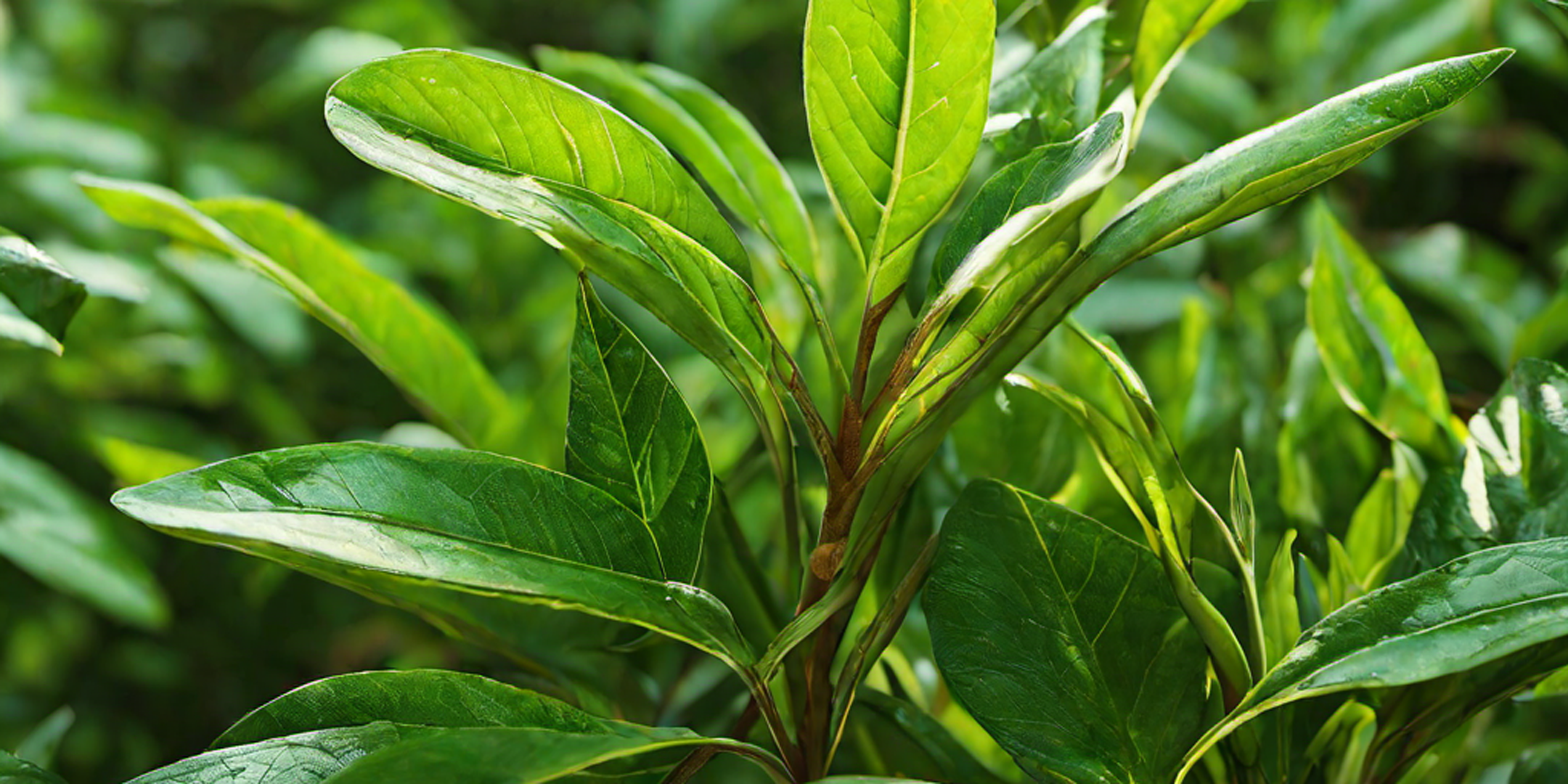If you're a tea lover or health enthusiast, chances are you've heard of matcha. But what exactly is matcha, and why has it become such a popular trend in the wellness world? In this article, we will delve into the mysteries surrounding matcha and uncover five essential facts about this vibrant green powdered tea that you need to know.
What is matcha?
Matcha is a unique type of tea that originated in Japan. Unlike traditional green tea, which involves steeping tea leaves and discarding them, matcha is made from whole tea leaves that have been finely ground into a vibrant green powder. This means that when you drink matcha, you're consuming the entire leaf's nutrients, resulting in a more concentrated dose of antioxidants and other beneficial compounds.
The vibrant green color of matcha is a result of the shading process it undergoes before harvest. About three weeks before the tea leaves are harvested, the tea plants are covered with shade cloths. This increases chlorophyll production, giving the leaves their rich green color. This shading process also enhances the flavor and nutrient profile of the leaves, making matcha a truly unique and special tea.
Traditionally, matcha is prepared using a bamboo whisk known as a chase. The powder is whisked with hot water in a bowl until frothy, resulting in a smooth and creamy beverage. The flavor of matcha can be described as grassy and vegetal, with a slight sweetness. Its unique taste and vibrant green color make matcha a favorite among tea enthusiasts and culinary enthusiasts alike.
Matcha is not only versatile in terms of preparation methods but also in its uses. Apart from being consumed as tea, matcha can be used in various recipes, such as lattes, smoothies, desserts, and even savory dishes. Its vibrant green color can add a pop of color and a unique flavor to any culinary creation.
The history of matcha
The history of matcha dates back over a thousand years to the Tang Dynasty in China. It was during this time that tea leaves were steamed and formed into bricks, which were then ground into a powder and whisked into hot water. This method of preparing tea, known as "whisked tea," was later brought to Japan by Buddhist monks.
In Japan, matcha became an integral part of the Japanese tea ceremony, known as Chanoyu. The tea ceremony is a deeply ritualistic tradition that underscores mindfulness, serenity, and celebrating beauty. Matcha, with its vibrant green color and unique flavor, was the perfect tea for this ceremony.
Over time, matcha became more widely consumed in Japan, extending beyond the tea ceremony. It became a popular beverage among samurais, monks, and the general population. Today, matcha is not only enjoyed in Japan but has gained popularity worldwide, thanks to its numerous health benefits and unique flavor profile.
Health benefits of matcha
Matcha is not only flavorful but also brimming with numerous health advantages. One standout feature is its rich concentration of antioxidants. These compounds play a crucial role in shielding our cells from damage caused by free radicals—unstable molecules that can contribute to chronic diseases and premature aging.
Matcha boasts high levels of antioxidants, including epigallocatechin gallate (EGCG), a potent catechin known for its anti-inflammatory and anti-cancer effects. It also can boost metabolism and promote weight loss.
Another important health benefit of matcha is its role in promoting calmness and mental clarity. Matcha contains an amino acid called L-theanine, which has been shown to induce a state of relaxation and improve focus. L-theanine works synergistically with caffeine, which is also present in matcha but in smaller amounts compared to coffee. The blend of L-theanine and caffeine in matcha offers a steady energy lift without the typical coffee jitters or subsequent crashes.
Matcha is also known for its detoxifying properties. The high concentration of chlorophyll in matcha helps to cleanse and alkalize the body. It facilitates the removal of toxins and heavy metals from the body, fostering overall health and well-being.
In addition to these benefits, matcha also supports cardiovascular health, boosts the immune system, and improves skin health. Its wide range of health benefits makes matcha a popular choice among those seeking a natural way to enhance their well-being.
How matcha is made
Matcha production involves several meticulous steps to ensure the highest quality tea. The process begins with shading the tea plants about three weeks before harvest. This shading process triggers an increase in chlorophyll production and enhances the flavor and nutrient profile of the leaves.
After the shading period, the tea leaves are carefully harvested by hand. Only the youngest and most tender leaves are selected for matcha production to ensure the highest quality. To prevent oxidation and maintain their vibrant green color, these leaves undergo a steaming process.
The steamed leaves are then dried and deveined, leaving only the leafy part of the tea leaves, known as tencha. Using traditional granite stone mills, the tencha leaves are meticulously ground into a fine powder. This grinding process can take several hours to produce just a small amount of matcha powder due to the slow and precise nature of the stone mills.
The final result is a vibrant green powder with a smooth and velvety texture. The quality of matcha can vary depending on various factors, including the region where it is grown, the cultivation methods used, and the grinding process. Matcha is commonly categorized into various grades, considering factors such as color, texture, and flavor profile.
Different grades of matcha
Matcha is available in various grades, each with its unique characteristics and intended uses. The pinnacle of matcha quality is often referred to as ceremonial grade matcha. This grade is made from the youngest and most tender leaves, resulting in a vibrant green color, a smooth texture, and a delicate flavor profile. Ceremonial-grade matcha is best enjoyed on its own as a tea, whisked with hot water to create a frothy and invigorating beverage.
The next grade is premium grade matcha, which is also made from high-quality leaves but may have a slightly stronger flavor and a slightly less vibrant green color compared to ceremonial grade matcha. Premium grade matcha is versatile and can be enjoyed as a tea or used in various culinary creations.
Cooking grade matcha, also known as culinary grade matcha, is the most affordable grade and is primarily used for cooking and baking. It has a stronger flavor and a slightly less vibrant green color compared to higher grades. Cooking-grade matcha is perfect for adding to smoothies, lattes, desserts, and savory dishes, providing a unique flavor and a vibrant green color.
When purchasing matcha, it's important to look for reputable sources that offer high-quality, organic matcha. The quality and flavor of matcha can vary significantly, so it's worth investing in a good quality matcha to fully enjoy its unique taste and health benefits.
Incorporating matcha into your daily routine
If you're new to matcha, incorporating it into your daily routine can seem overwhelming. However, with a few simple tips, you can easily enjoy the benefits of matcha regularly.
One of the most common ways to enjoy matcha is as a traditional tea. To prepare matcha tea, simply sift a teaspoon of matcha powder into a bowl, add hot water (not boiling), and whisk vigorously with a bamboo whisk until frothy. The result is a smooth and invigorating beverage that can be enjoyed on its own or with a touch of sweetener.
If you prefer a creamier and sweeter version of matcha, you can make a matcha latte. Simply whisk a teaspoon of matcha powder with a small amount of hot water to create a paste, then add steamed milk and sweeten to taste. This creamy and comforting beverage is perfect for a cozy morning or afternoon pick-me-up.
For those who enjoy smoothies, matcha can be a great addition to your favorite recipes. Simply blend a teaspoon of matcha powder with your choice of fruits, vegetables, and liquid for a vibrant and nutrient-packed smoothie. The earthy and slightly sweet flavor of matcha pairs well with a variety of ingredients, making it a versatile addition to your smoothie routine.
If you're feeling adventurous, you can also experiment with incorporating matcha into your baking and cooking. Matcha can add a unique flavor and a vibrant green color to cakes, cookies, ice cream, and even savory dishes like pasta and sauces. The possibilities are endless, allowing you to explore your culinary creativity while enjoying the health benefits of matcha.
Matcha recipes and ideas
Looking for some matcha recipe inspiration? Here are a few suggestions:
Matcha Green Smoothie Bowl: Blend a frozen banana, spinach, almond milk, and a teaspoon of matcha powder until smooth. Create a vibrant bowl by pouring the mixture and adding a burst of freshness with your preferred toppings like ripe berries, crunchy granola, and delicate coconut flakes.
Matcha Chia Pudding: Mix chia seeds, almond milk, a teaspoon of matcha powder, and a sweetener of your choice. Allow the mixture to rest in the refrigerator overnight, giving the chia seeds ample time to absorb the liquid. In the morning, top with fresh fruit and nuts for a delicious and energizing breakfast.
Matcha Energy Balls: In a food processor, blend dates, almonds, cashews, a tablespoon of matcha powder, and a pinch of salt until well combined. Form the mixture into small balls and chill in the refrigerator for at least 30 minutes. These energy balls make a perfect on-the-go snack or a sweet treat after a workout.
Matcha Overnight Oats: Mix rolled oats, almond milk, a teaspoon of matcha powder, and a sweetener of your choice in a jar. Let it sit in the fridge overnight, and in the morning, top with your favorite fruits and nuts for a quick and nutritious breakfast.
Matcha White Chocolate Bark: Melt white chocolate and stir in a teaspoon of matcha powder. Spread the mixture onto a parchment-lined tray and sprinkle with your favorite toppings, such as crushed pistachios or dried cranberries. Let it sit in the fridge or freezer, then break it into pieces for a delicious and visually appealing treat.
These are just a few examples of how you can incorporate matcha into your daily routine. Explore your culinary creativity by adapting these recipes to align with your taste preferences and dietary requirements.
Common misconceptions about matcha
As matcha continues to gain popularity, there are some common misconceptions surrounding this vibrant green tea. Let's clear up some misunderstandings:
Matcha and green tea are the same: While matcha and green tea both come from the same plant, the Camellia sinensis plant, they are not the same. Matcha derives from finely ground whole tea leaves, whereas green tea requires steeping the leaves before discarding them.
Matcha is highly caffeinated: While matcha does contain caffeine, the caffeine content is lower compared to coffee. Matcha also contains L-theanine, an amino acid that promotes a sense of calmness and relaxation. The combination of L-theanine and caffeine in matcha provides a sustained energy boost without the jitters or crashes often associated with coffee.
Matcha is only consumed as a tea: While matcha is traditionally consumed as a tea, it can also be used in various recipes, such as lattes, smoothies, desserts, and even savory dishes. Its unique flavor and vibrant green color make it a versatile ingredient in the culinary world.
All matcha are of the same quality: Matcha is available in different grades, ranging from ceremonial grade to cooking grade. The quality of matcha can vary significantly based on factors such as cultivation methods, harvesting techniques, and grinding process. It's important to choose high-quality matcha to fully enjoy its unique taste and health benefits.
Conclusion
Matcha isn't just a passing trend; it's a centuries-old tradition with a wealth of health benefits. From its rich history to its vibrant green color and unique taste, matcha has captured the hearts of tea lovers and health enthusiasts around the world.
In this article, we have uncovered five essential facts about matcha that you need to know. We've explored what matcha is and how it differs from traditional green tea. We've delved into the history of matcha and its role in Japanese culture. We've discussed the health benefits of matcha, including its antioxidant content, calming properties, and detoxifying effects. We've also explored how matcha is made, the different grades of matcha, and how to incorporate matcha into your daily routine.
So, the next time you sip on a frothy matcha latte or enjoy a matcha-infused dessert, you can appreciate the rich history, health benefits, and unique taste of this captivating green elixir.




